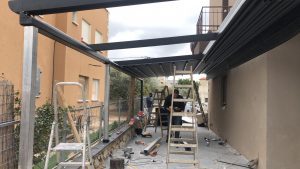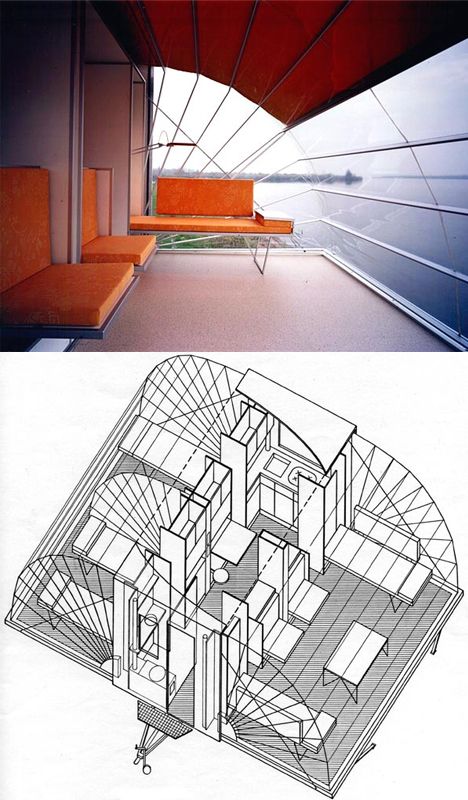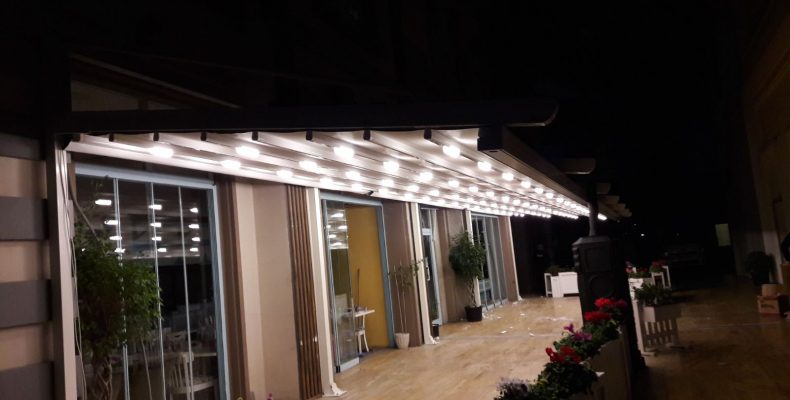The Pergolas Law of 2020 - What is Allowed and What is Forbidden In order to obtain an exemption from the construction permit for a pergola, one needs to follow the guidelines set by the new planning authority, which offers a simplification compared to unnecessary bureaucratic procedures.
This article provides you with all you need to know about an exemption from a building permit for a pergola. To qualify for the exemption, the pergola structure must be made of lightweight materials, without walls that partially enclose it, and serve as a shading area.
The spaces between the watertight parts of the ceiling will be divided equally and constitute at least 40% of the shading structure's ceiling (meaning not more than 60% of the ceiling will be watertight).


The Pergolas Law of 2020 - What is Allowed and What is Forbidden will be granted under the following conditions:
- The pergola's area shall not exceed 50 square meters or 1/4 (whichever is greater) of the ground/roof area upon which it is constructed.
- The pergola will only be erected on the ground or on the roof of the structure (meaning not on balconies in buildings) unless otherwise specified in the permit, in accordance with spatial guidelines or the outline plan (this can be checked during public hours at the local planning and building committee).
- The pergola is not required to be attached to the building but must be within the permissible building lines (which can be obtained from the local committee).
- If you want to go beyond the building lines, you can deviate up to 40% from them (meaning if the building line is 5 meters from the front property boundary, you can deviate and get as close as 3.0 meters to the property boundary) but in such cases, a permit is required, and there is no exemption.
- According to the Pergolas Law of 2020, you must notify the licensing authority about the construction of the pergola within 45 days from the completion date of the work.
- You must include with the notification an approval from a structural engineer regarding the anchoring and stability of the pergola.
Application Form for Building Permit Exemption: Report of Work Exempt from Permit
The Pergolas Law - Arnona (property tax)
The Pergolas Law - Sanctioned
Approval for second and third readings: Adding a plastic roof to a pergola will not require property tax (Arnona) payment. This applies to municipalities where pergolas that are not covered by Arnona are not subject to property tax, and such a charge is only imposed for adding a surface covering to the pergola.
Under the law, all definitions that define what a pergola is remain unchanged. Additionally, this applies only to residential buildings and not to businesses or other structures.


Pergolas, roofed structures, and awnings - Exemption from building permits
A roofed structure or pergola can be erected at the entrance to a building or any other location, provided it does not protrude more than 2 meters from the building and does not exceed the permissible building lines for regular construction. For up to 20 square meters, no building permit is required.
For areas larger than 20 square meters, you must notify the licensing authority within 45 days from the completion date of the work. The notification should include an approval from a structural engineer regarding the anchoring and stability of the roofed structure or pergola. Here is the link:
Application form for requesting a roofed structure above 20 square meters. (No building permit is required, only notification).
The roofed structure should be constructed using lightweight materials only, such as wood, glass, aluminum, steel, various polymers, or similar materials, with a weight not exceeding 50 kg per square meter of flat structure component (referring to beams). This does not include heavy ceramic tiles.
It's important to note that the roofed structure is subject to building rights (either as a primary or service area). Therefore, before construction, it is essential to ensure that there are unused building rights on the site, in accordance with the Planning and Building Regulations.
(Calculations of areas and building percentages in plans and permits), 1992. The exemption does not exempt you from the need for building rights but rather from the need for a building permit only.
The Pergolas Law of 2020 - Folding Awning: The guidelines for exemption are similar to those for pergolas and roofed structures. It should be ensured that the folding awning does not protrude more than 50 cm from the closed position towards the building wall.
Net/Shade Canopy: The exemption applies to shading achieved through an awning that provides protection from the sun and the effects of weather conditions, as long as the height of the awning does not exceed 3 meters, the span between the columns does not exceed 5 meters, and the weight of the awning does not exceed 3.5 kilograms per square meter.
An expedited licensing process
The main goal in the field of licensing, as outlined in Amendment 101 to the Planning and Building Law, 5725-1965, is to streamline and improve the licensing processes without compromising the quality of construction. One of the ways to achieve this goal is to create differentiation between the licensing procedures, defining three pathways: a full licensing process, an expedited licensing process, and works and uses that will be exempt from permits. You can read more about it here.
In accordance with Section 145B of the Pergolas Law of 2020, the Minister of Finance was granted the authority to determine types of buildings, works, and uses that may be subject to expedited licensing procedures, provided they meet the following criteria:
The regulations for an expedited licensing process shall not apply to an application for a permit:
In order to ensure that these buildings/works are carried out in a professional and safe manner, both for the residents and those in their vicinity, the Minister of Finance has been authorized to determine specifications and conditions for these types of buildings and works.


General Conditions - Pergolas Law of 2020:



1 Comment
מאוד מרשים ויפה